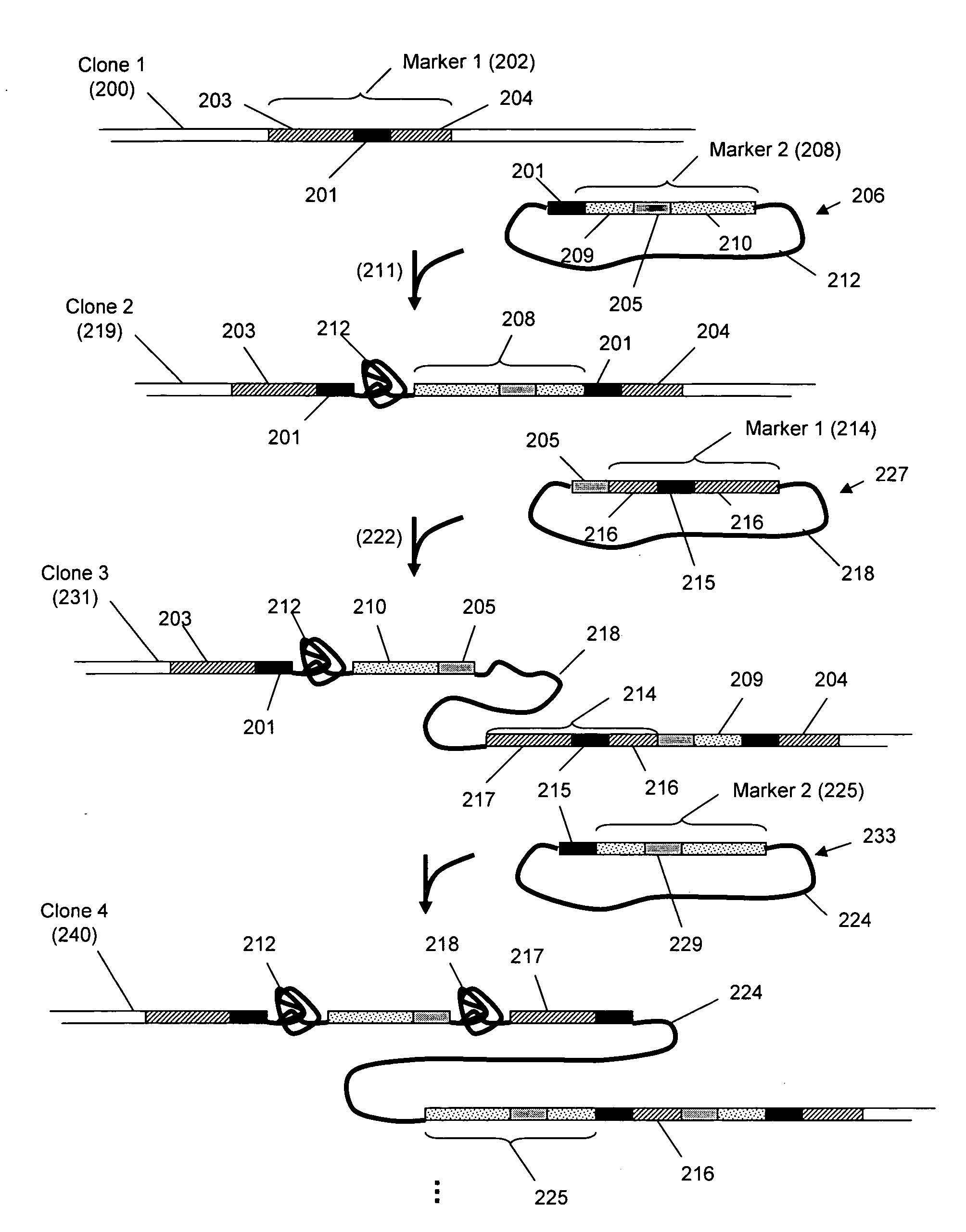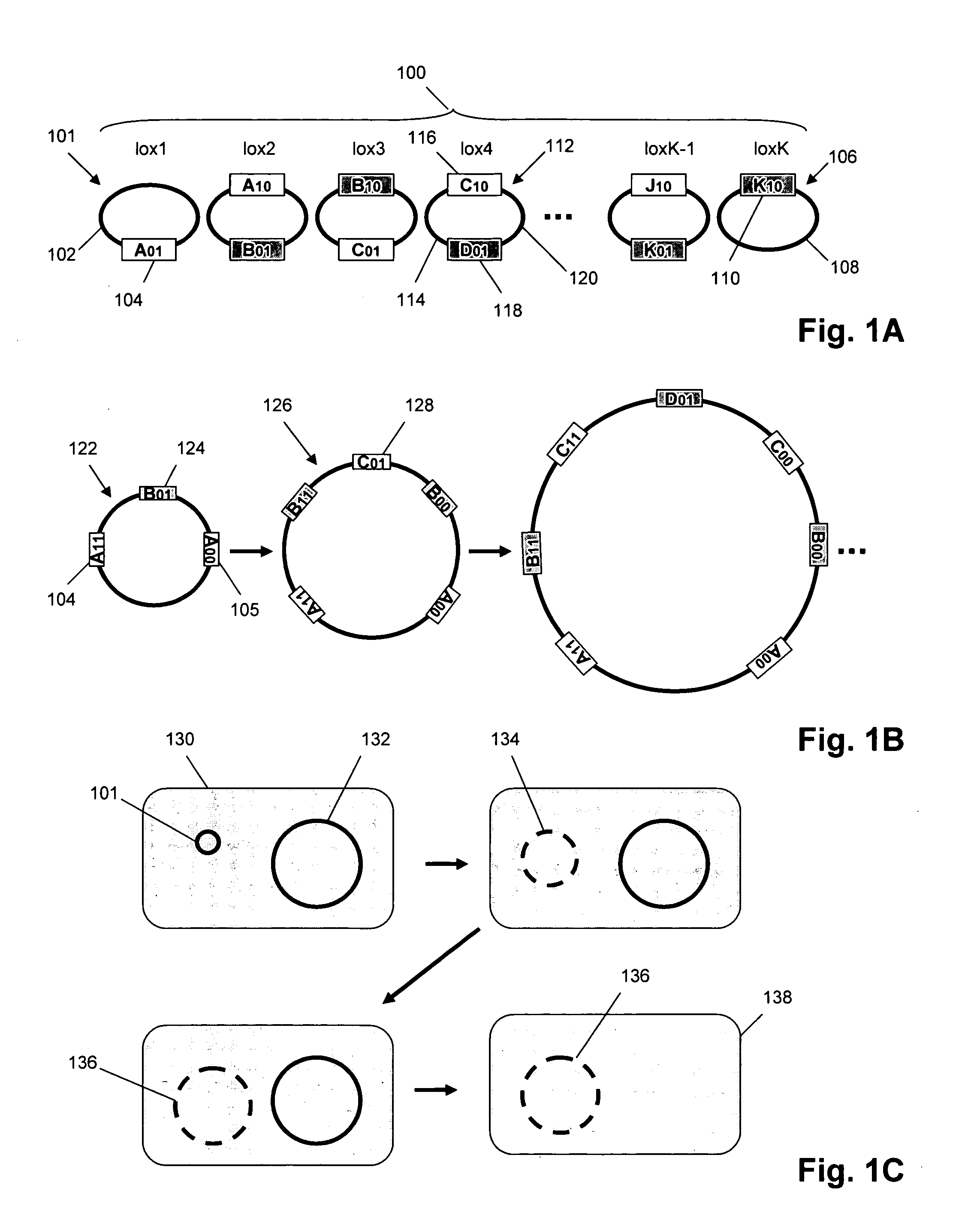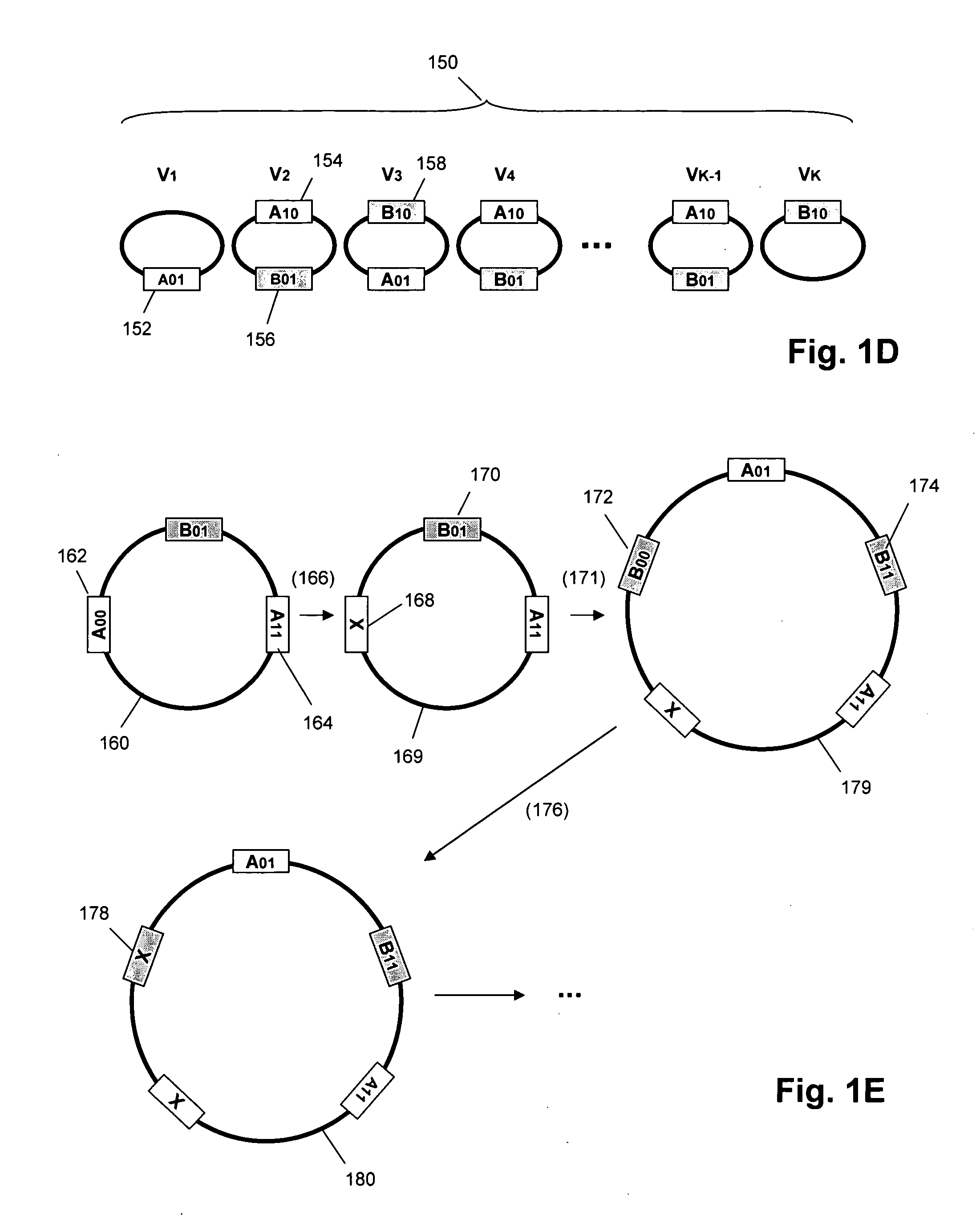Modular genomes for synthetic biology and metabolic engineering
a technology of metabolic engineering and modules, applied in the field of methods and compositions for genetically modified microorganisms, can solve the problems of increasing the difficulty of manipulating multiple genes and/or regulatory elements, lack of order, etc., and achieves the effect of maximizing or minimizing protein production, facilitating replacement, deletion and/or addition
- Summary
- Abstract
- Description
- Claims
- Application Information
AI Technical Summary
Benefits of technology
Problems solved by technology
Method used
Image
Examples
example i
Use of H. influenzae as Genome Donor to an E. coli Host
[0051] In this example, H. influenzae was selected as a donor organism because of its free living status and its relatively compact genome (1.83 Mbp). The strain of H. influenzae employed is Rd KW20, which is kanamycin resistant and RecA negative (to eliminate the possibility of confounding homologous recombination). E. coli was selected as the host organism, specifically the HMS174 strain (Novagen), as it has K12 background, supports IPTG inducible recombinant protein expression, and is RecA negative. H. influenzae and E. coli are closely related, commensal gammaproteobacteria and the complete genome sequence is available for both organisms [(Science 269, 496-512 (1995); Science 277, 1453-1452 (1997)].
[0052] A BAC library was constructed from an MboI partial digest of H. influenzae gDNA. BAC clones from this library were end sequenced at high redundancy (>200× clone coverage) and mapped to the reference H. influenzea genome s...
example ii
In Vivo Assembly of Episomal Elements in E. coli
[0054] In this example episomal elements that contain mutant LoxP sites are constructed using standard molecular biology procedures. These constructs are transformed sequentially into an E. coli host and fusion is mediated by induction of Cre expression within the host cell. Separately, Bacterial Artificial Chromosomes (BACs) containing large segments of the H. influenzae genome are retrofit with mutant lox sites and selectable markers using the RED / ET system. BACs retrofitted in this manner are suitable for serial recombination in Cre expressing RED / ET E. coli host cells.
[0055] A short DNA segment with an EcoRI compatible overhang on one end plus a HindIII compatible overhang on the opposite end, and containing a LoxP site that has both an LE arm mutant (ATAAC to TACCG) and a spacer mutant (C to G at spacer position 2 and A to C at spacer position 7) was ligated into EcoRI / HindIII cut and gel purified pET19b expression vector. This ...
PUM
| Property | Measurement | Unit |
|---|---|---|
| temperature | aaaaa | aaaaa |
| temperatures | aaaaa | aaaaa |
| temperatures | aaaaa | aaaaa |
Abstract
Description
Claims
Application Information
 Login to View More
Login to View More - R&D
- Intellectual Property
- Life Sciences
- Materials
- Tech Scout
- Unparalleled Data Quality
- Higher Quality Content
- 60% Fewer Hallucinations
Browse by: Latest US Patents, China's latest patents, Technical Efficacy Thesaurus, Application Domain, Technology Topic, Popular Technical Reports.
© 2025 PatSnap. All rights reserved.Legal|Privacy policy|Modern Slavery Act Transparency Statement|Sitemap|About US| Contact US: help@patsnap.com



